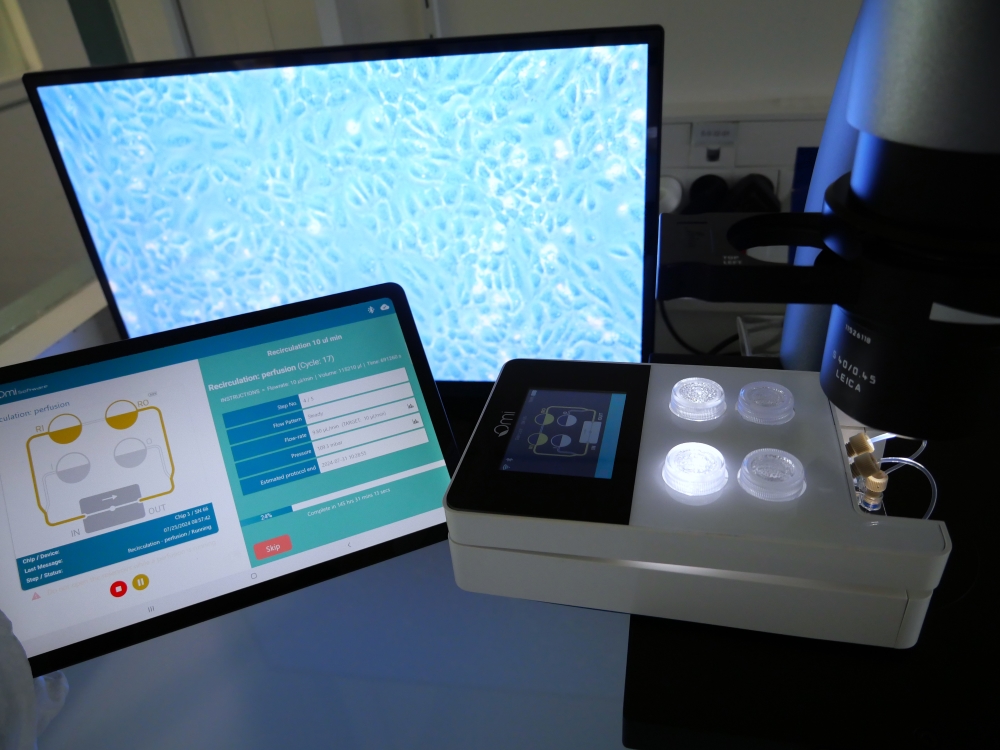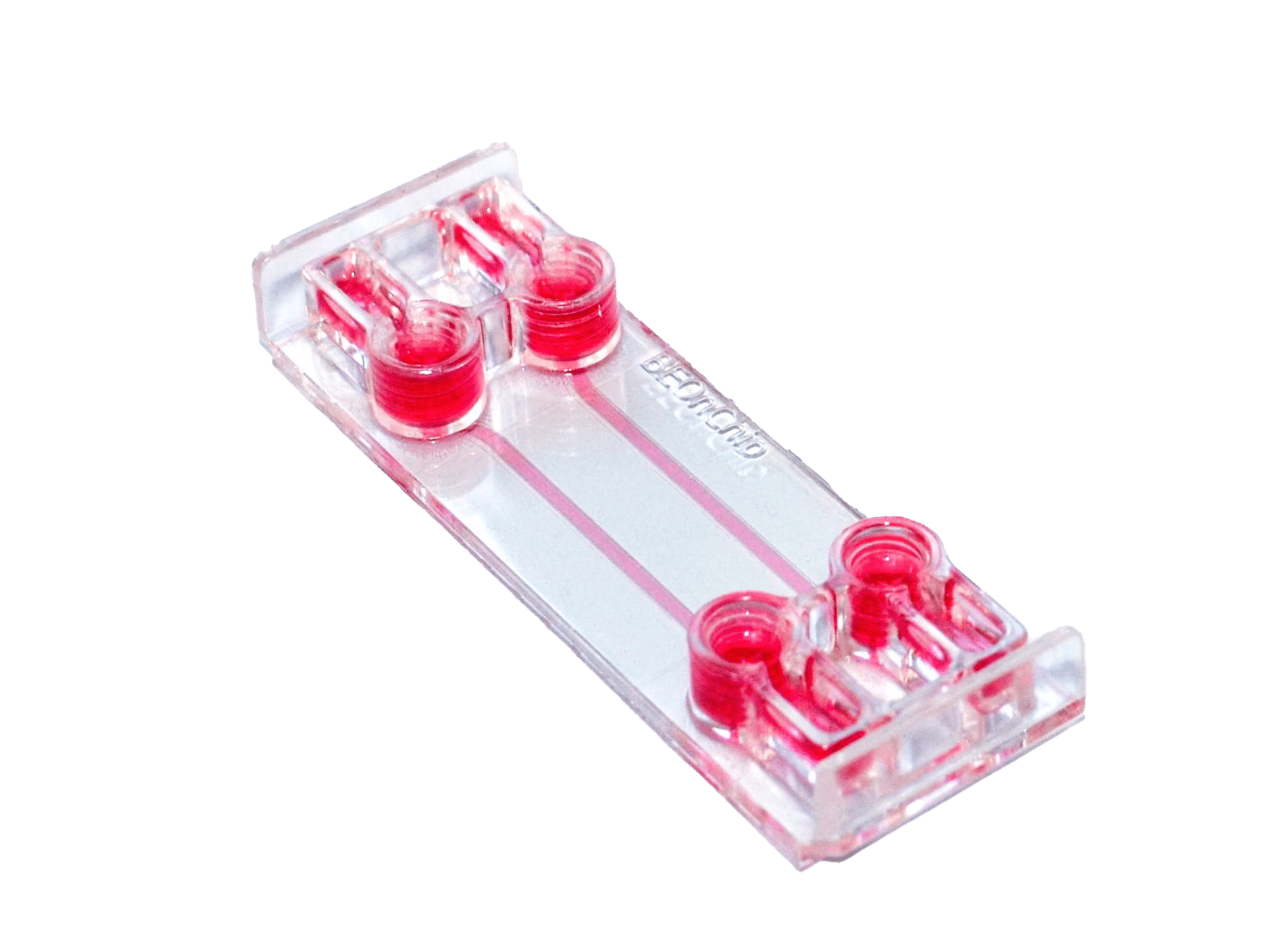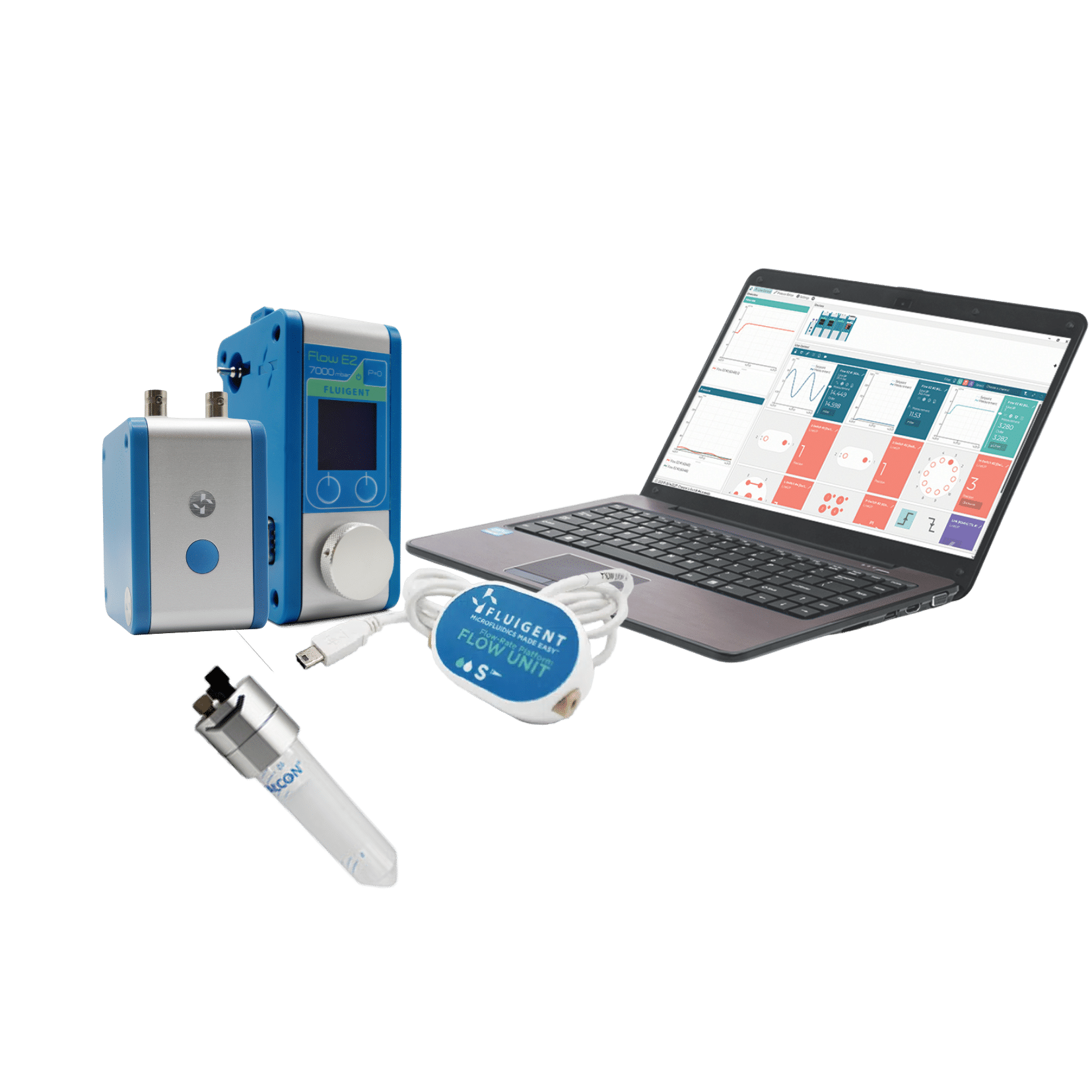Gut-on-Chip Model Development Using OOAC Platform, Omi
Microfluidics for gut-on-chip model enable precise control over the microenvironment, mimicking the complex physiological conditions of the human gut. These systems allow for the co-culture of various cell types under dynamic flow conditions, promoting tissue differentiation and function. This technology offers valuable insights into gut physiology, disease modeling, and drug testing by replicating the intricate interactions between the gut epithelium, microbiota, and immune cells.
Gut-on-a-chip for disease models
Organ-on-chip technologies replicate the physiological complexity of organs using microfluidic and cell culture devices. The gut-on-chip model, primarily using the Caco-2 cell line, is a powerful tool for studying intestinal physiology and pathology, as Caco-2 cells can differentiate into a mix of intestinal epithelial cells under proper flow conditions.
Combining the BE-FLOW microfluidic chip with the Fluigent Omi platform allows for precise flow control and long-term culture, promoting cell differentiation, nutrient supply, and enhanced intestinal barrier function to mimic the human intestine.
Create a gut-on-a-chip model
Every successful organ-on-a-chip development needs a suitable microfluific chip, and easy to use microfluidic recirculation platform and the corresponding cell line to create the desired organ model.
In the case of gut-on-chip model, users would need Caco-2 cells cultured in fibronectin coated microfluidic channels.
- Microfluidic chip: The design of the BE-FLOW consists of 2 independent channels with threaded inlets and outlets enabling the insertion of connectors and tubing coupled to fluidic controllers. It is possible to apply an independent flow rate in both channels using any perfusion system (Fig.1).
- Cell culture: After coating the channels with fibronectin to enhance cells adhesion, Caco-2 cells are cultured for at least 24h to allow a well-established cell monolayer, before connecting it to the microfluidic setup
- Omi: Omi is Fluigent’s automated Organ-on-chip platform. It was conceived to simplify complicated microfluidic setups for researchers in the organ-on-chip field. After having a homogeneous cell monolayer, the microfluidic chip could be connected to Omi, to launch a recirculation protocol for a defined period (Fig.2).
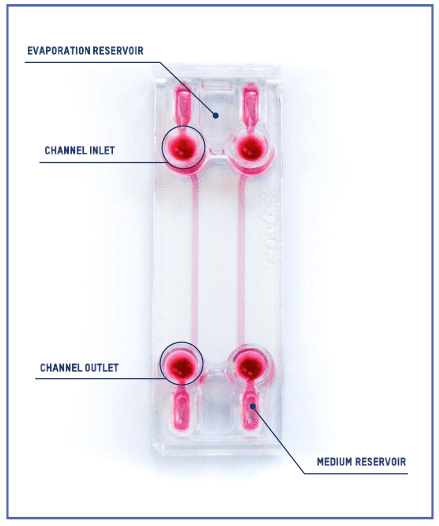
Figure 1: Be-Flow microfluidic chip (BeOnChip)
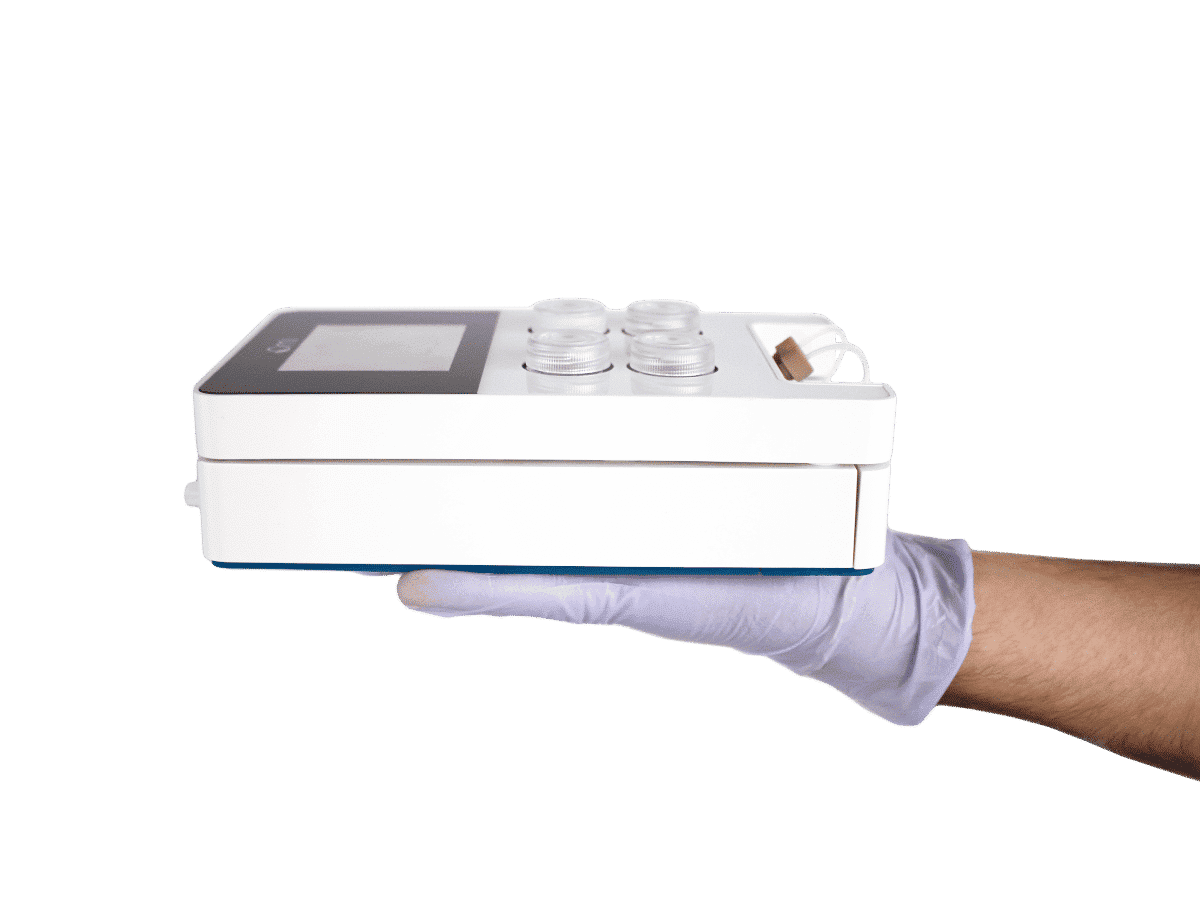
Figure 2: The Omi, automated OoC platform.
Using the Omi platform for Organ-on-Chip Modeling
Caco-2 cells will form 3D structures under perfusion, compared to static conditions. The results of culturing the gut-on-chip model for up to seven days using the Omi show similar results to classical microfluidic setups. The advantage of using the Omi is its user-friendliness, as it can easily fit under a microscope and/or be placed inside an incubator.
As observed in the following figures, cell density has increased after being cultured under flow conditions. Cells started to colonize the top of the chip after three days, a feature not seen under static conditions.
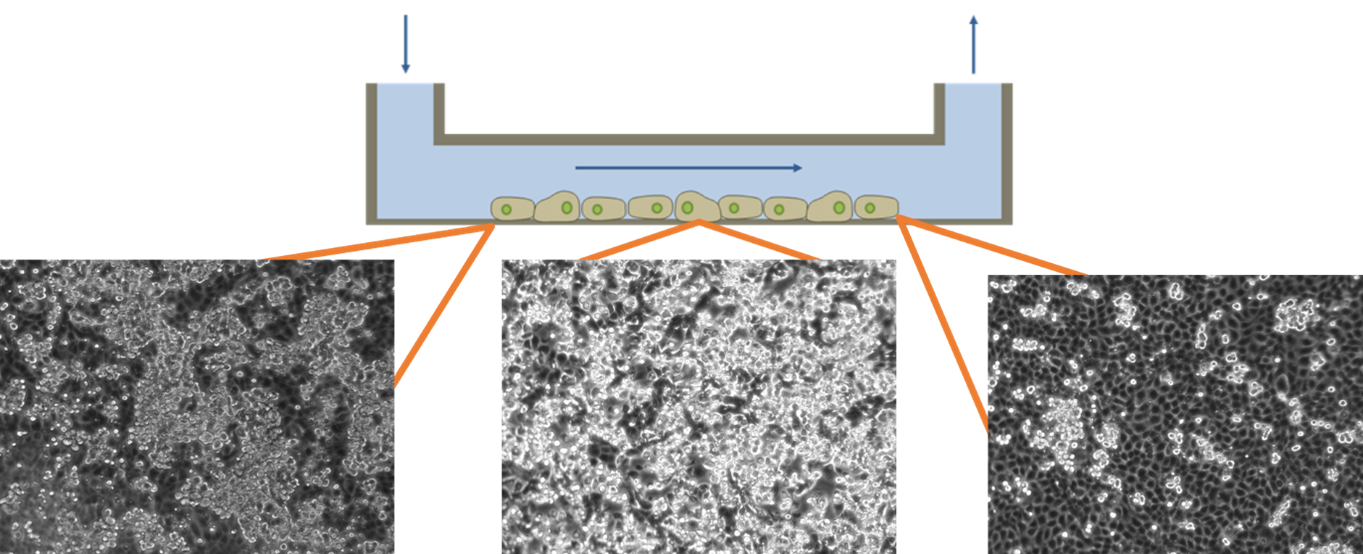
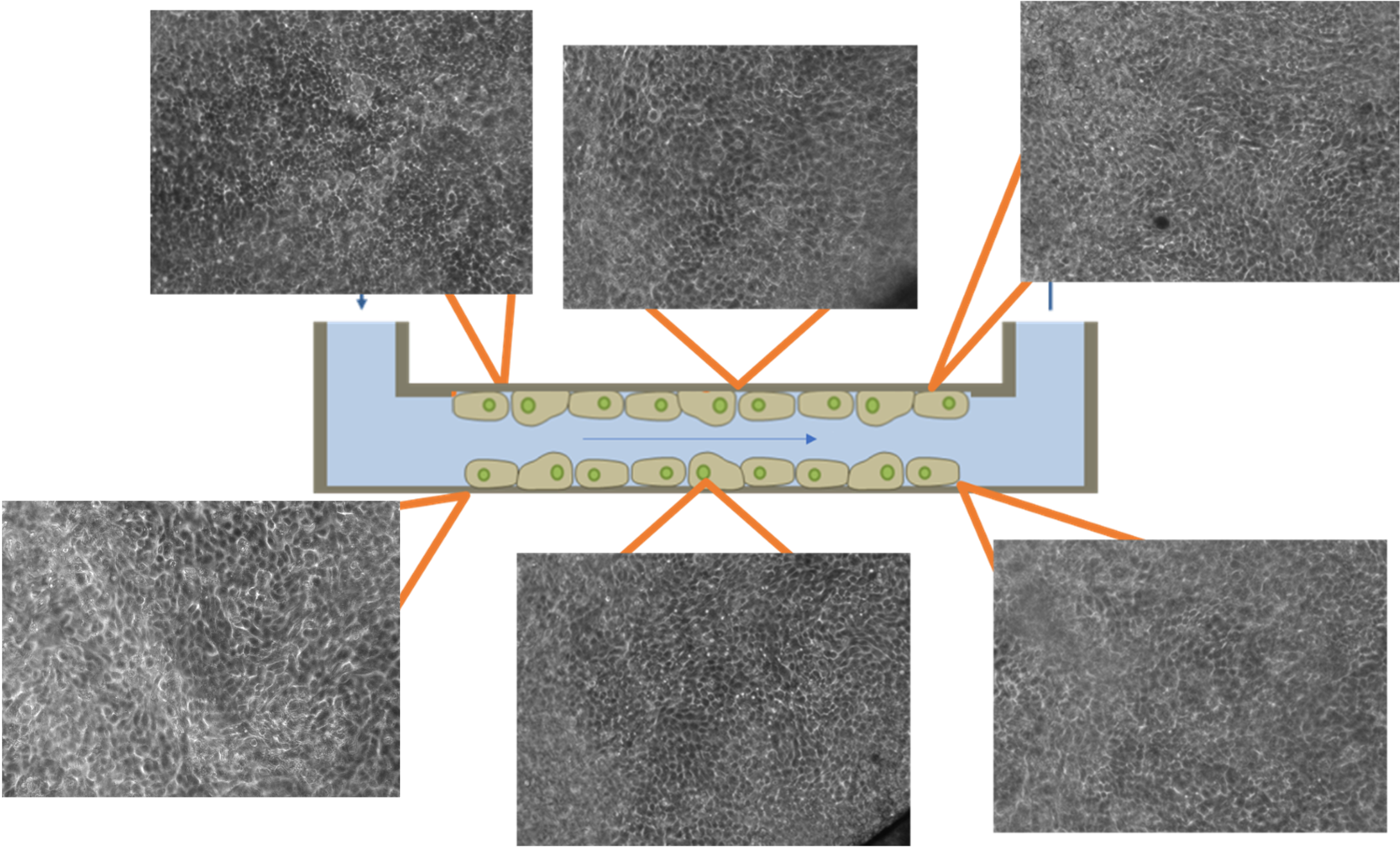
Conclusion
Omi, organ-on-chip platform, associated with BE-FLOW is a suitable solution for long term recirculation of cell culture media, to create a gut-on-chip model. It permits a high precision flow delivery which has permitted to obtain an interesting monolayer usable for an organ-on-a-chip application. Omi is easy to use, autonomous and portable under a microscope making it the perfect companion for on-chip biology experiments.
Omi
Omi is an automated platform that helps reproduce the microphysiological behavior of organs inside microfluidic chips. It is compatible any type of chips to sustain different cell culture types or organ on chip models (Liver, Gut, Skin…).
Related products
Expertises & Resources
-
Microfluidic Application Notes Controlling Flow Rate and Shear Stress with Omi™ to Study Endothelial Cell Response Read more
-
Expert Reviews: Basics of Microfluidics Pressure-Controlled Microfluidics in Organ-On-A-Chip Research Read more
-
Microfluidic Application Notes Long-term fluid recirculation system for Organ-on-a-Chip applications Read more
-
Expert Reviews: Basics of Microfluidics Microfluidics overview: History and Definition Read more
